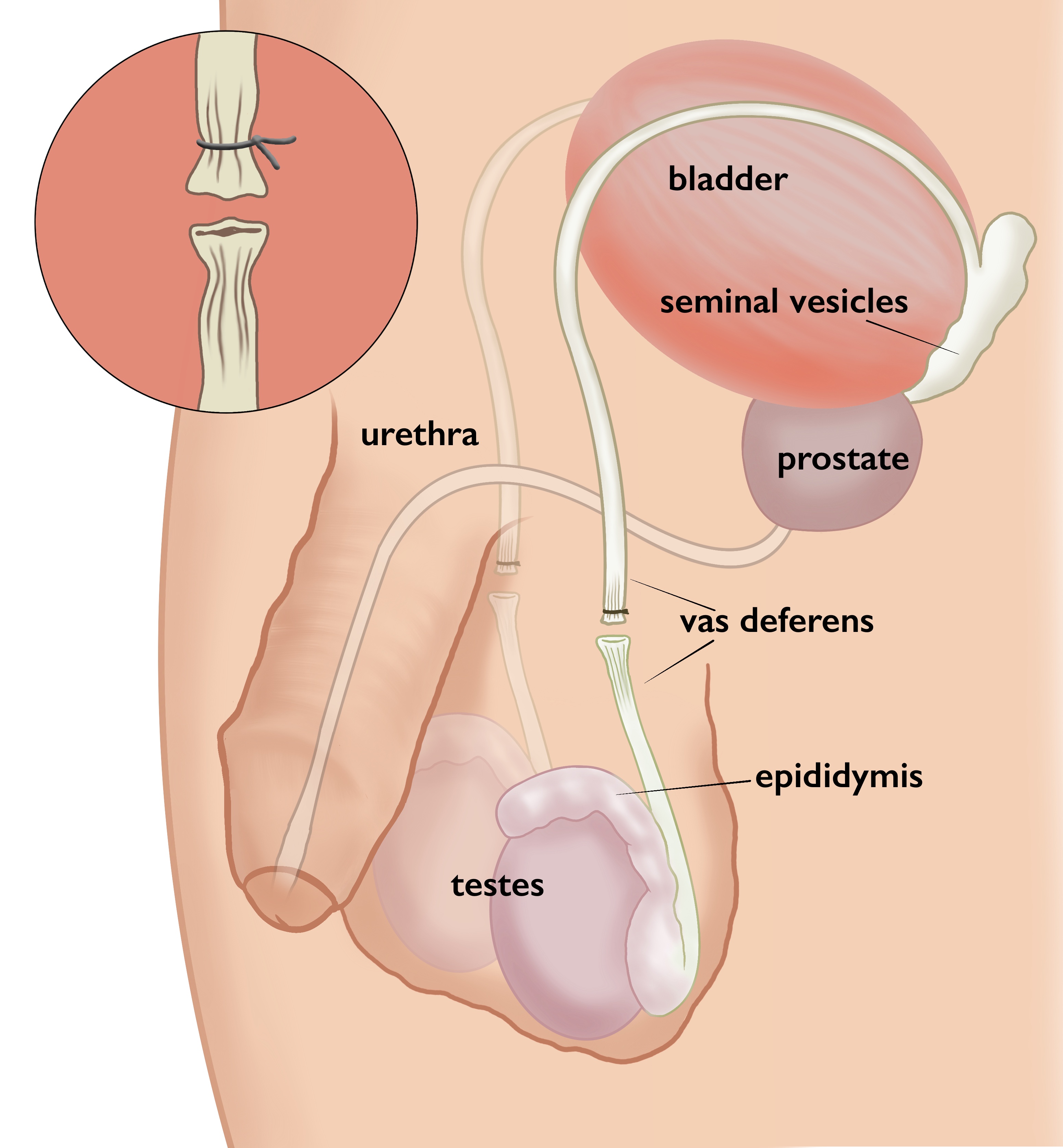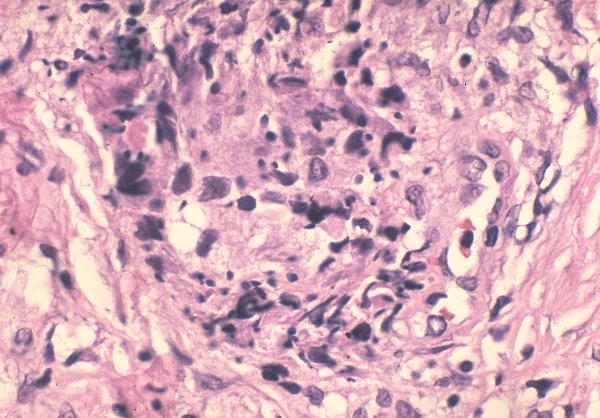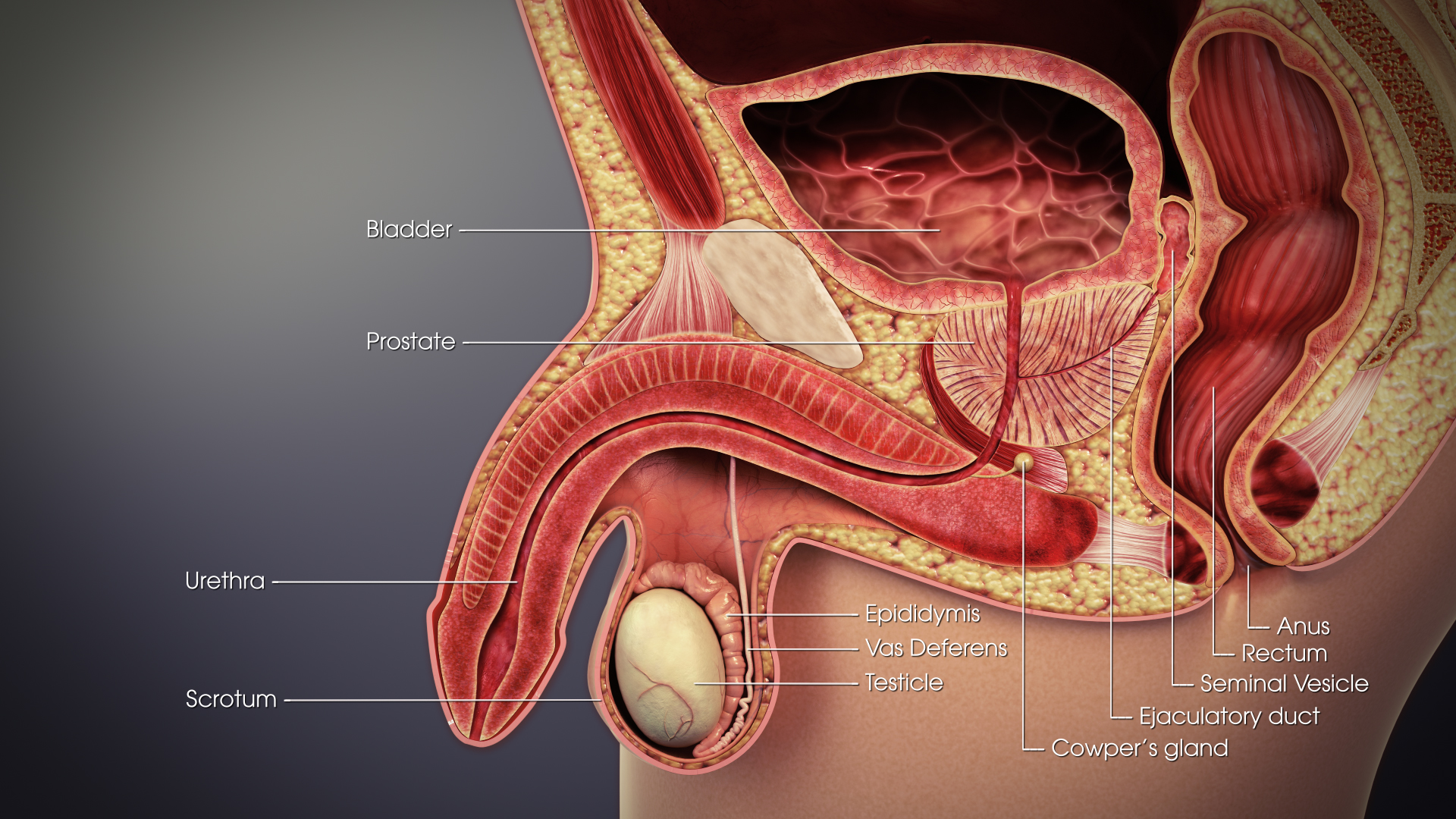|
Vasovasostomy
Vasovasostomy (literally connection of the vas to the vas) is a surgery by which vasectomies are partially reversed. Another surgery for vasectomy reversal is vasoepididymostomy. History Vasovasostomy is a form of microsurgery first performed by Australian surgeon Dr. Earl Owen (1934–2014) in 1971. Limitations In most cases the vas deferens can be reattached but, in many cases, fertility is not achieved. There are several reasons for this, including blockages in the vas deferens, and the presence of autoantibodies which disrupt normal sperm activity. If blockage at the level of the epididymis is suspected, a vasoepididymostomy can be performed. Return of sperm to the ejaculate depends greatly on the length of time from the vasectomy and the skill of the surgeon. Generally, the shorter the interval, the higher the chance of success. The likelihood of pregnancy can depend on female partner factors. Over half of men who have undergone a vasectomy develop anti-sperm antibodie ... [...More Info...] [...Related Items...] OR: [Wikipedia] [Google] [Baidu] |
Vasectomy Reversal
Vasectomy reversal is a term used for surgical procedures that reconnect the male reproductive tract after interruption by a vasectomy. Two procedures are possible at the time of vasectomy reversal: vasovasostomy (vas deferens to vas deferens connection) and vasoepididymostomy (epididymis to vas deferens connection). Although vasectomy is considered a permanent form of contraception, advances in microsurgery have improved the success of vasectomy reversal procedures. The procedures remain technically demanding and may not restore the pre-vasectomy condition. Procedure Preparation A general or regional anesthetic is most commonly used, as this offers the least interruption by patient movement for microsurgery. Local anesthesia, with or without sedation, can also be used. The procedure is generally done on a “come and go” basis. The actual operating time can range from 1–4 hours, depending on the anatomical complexity, skill of the surgeon and the kind of procedure perform ... [...More Info...] [...Related Items...] OR: [Wikipedia] [Google] [Baidu] |
Vasoepididymostomy
Vasoepididymostomy or epididymovasostomy is a surgery by which vasectomies are reversed. It involves connection of the severed vas deferens to the epididymis and is more technically demanding than the vasovasostomy. For a vasectomy reversal that involves a vasoepididymostomy, there are two microsurgical approaches. The procedure involves a similar surgical incision as vasovasostomy; however, unlike with a vasovasostomy, the testis is usually delivered into the field for this more complex microsurgery. After the findings from the vasal fluid are reviewed showing epididymal obstruction, the epididymis is exposed by opening the outer testis covering (tunica vaginalis). The epididymis is inspected and an individual tubule is selected to enter and connect to the vas deferens. From this point on, one of two epididymovasostomy techniques is taken. In the mucosa-to-mucosa, end to side method, an opened epididymal tubule is connected to the cut end of the vas deferens with 4 to 6 small (10- ... [...More Info...] [...Related Items...] OR: [Wikipedia] [Google] [Baidu] |
Vasectomy
Vasectomy is an elective surgical procedure that results in male sterilization, often as a means of permanent contraception. During the procedure, the male vasa deferentia are cut and tied or sealed so as to prevent sperm from entering into the urethra and thereby prevent fertilization of a female through sexual intercourse. Vasectomies are usually performed in a physician's office, medical clinic, or, when performed on a non-human animal, in a veterinary clinic. Hospitalization is not normally required as the procedure is not complicated, the incisions are small, and the necessary equipment routine. There are several methods by which a surgeon might complete a vasectomy procedure, all of which occlude (i.e., "seal") at least one side of each vas deferens. To help reduce anxiety and increase patient comfort, those who have an aversion to needles may consider a "''no-needle''" application of anesthesia while the ' no-scalpel' or 'open-ended' techniques help to accelerate r ... [...More Info...] [...Related Items...] OR: [Wikipedia] [Google] [Baidu] |
Sperm Granuloma
A sperm granuloma is a lump of leaked sperm that appears along the vasa deferentia or epididymides in vasectomized individuals. While the majority of sperm granulomas are present along the vas deferens, the rest of them form at the epididymis. Sperm granulomas range in size, from one millimeter to one centimeter. They consist of a central mass of degenerating sperm surrounded by tissue containing blood vessels and immune system cells. Sperm granulomas may also have a yellow, white, or cream colored center when cut open. While some sperm granulomas can be painful, most of them are painless and asymptomatic. Sperm granulomas can appear as a result of surgery (such as a vasectomy), trauma, or an infection (such as sexually transmitted diseases). They can appear as early as four days after surgery and fully formed ones can appear as late as 208 days later. Sperm granulomas are a common complication of different types of vasectomy. In vasectomies, the vas deferens are cut and the two ... [...More Info...] [...Related Items...] OR: [Wikipedia] [Google] [Baidu] |
Vas Deferens
The vas deferens (: vasa deferentia), ductus deferens (: ductūs deferentes), or sperm duct is part of the male reproductive system of many vertebrates. In mammals, spermatozoa are produced in the seminiferous tubules and flow into the epididymal duct. The end of the epididymis is connected to the vas deferens. The vas deferens ends with an opening into the ejaculatory duct at a point where the duct of the seminal vesicle also joins the ejaculatory duct. The vas deferens is a partially coiled tube which exits the abdominal cavity through the inguinal canal. Etymology ''Vas deferens'' is Latin, meaning "carrying-away vessel" while ''ductus deferens'', also Latin, means "carrying-away duct". Structure The human vas deferens measures 30–35 cm in length, and 2–3 mm in diameter. It is continuous proximally with the tail of the epididymis, and exhibits a tortuous, convoluted initial/proximal section (which measures 2–3 cm in length). Distally, it forms a dilated ... [...More Info...] [...Related Items...] OR: [Wikipedia] [Google] [Baidu] |
Urologic Surgery
Urology (from Greek οὖρον ''ouron'' "urine" and ''-logia'' "study of"), also known as genitourinary surgery, is the branch of medicine that focuses on surgical and medical diseases of the urinary system and the reproductive organs. Organs under the domain of urology include the kidneys, adrenal glands, ureters, urinary bladder, urethra, and the male reproductive organs (testes, epididymides, vasa deferentia, seminal vesicles, prostate, and penis). The urinary and reproductive tracts are closely linked, and disorders of one often affect the other. Thus a major spectrum of the conditions managed in urology exists under the domain of genitourinary disorders. Urology combines the management of medical (i.e., non-surgical) conditions, such as urinary-tract infections and benign prostatic hyperplasia, with the management of surgical conditions such as bladder or prostate cancer, kidney stones, congenital abnormalities, traumatic injury, and stress incontinence. Urological tec ... [...More Info...] [...Related Items...] OR: [Wikipedia] [Google] [Baidu] |
Vasitis Nodosa
Vasitis nodosa is a complication experienced in approximately 66% of men who undergo vasectomy. It is a benign nodular thickening of the vas deferens, in which small offshoots proliferate, infiltrating surrounding tissue. It can be mistaken for low-grade adenocarcinoma by pathologists A list of people notable in the field of pathology. A * John Abercrombie, Scottish physician, neuropathologist and philosopher. * Maude Abbott (1869–1940), Canadian pathologist, one of the earliest women graduated in medicine, expert in c ..., and is implicated in late vasectomy failure. See also * Salpingitis isthmica nodosa References Contraception for males Sterilization (medicine) Male genital disorders {{genitourinary-disease-stub ... [...More Info...] [...Related Items...] OR: [Wikipedia] [Google] [Baidu] |
Tubal Ligation
Tubal ligation (commonly known as having one's "tubes tied") is a surgical procedure for female sterilization in which the fallopian tubes are permanently blocked, clipped or removed. This prevents the fertilization of eggs by sperm and thus the Implantation (human embryo), implantation of a fertilized egg. Tubal ligation is considered a permanent method of Sterilization (medicine), sterilization and birth control by the FDA. Bilateral tubal ligation is not considered a sterilization method by the MHRA. Medical uses Female sterilization through tubal ligation is primarily used to permanently prevent a patient from having a Pregnancy, spontaneous pregnancy (as opposed to pregnancy via In vitro fertilisation, in vitro fertilization) in the future. While both hysterectomy (the removal of the uterus) or bilateral oophorectomy (the removal of both ovaries) can also accomplish this goal, these surgeries carry generally greater health risks than tubal ligation procedures. Less common ... [...More Info...] [...Related Items...] OR: [Wikipedia] [Google] [Baidu] |
Tubal Reversal
Tubal reversal, also called tubal sterilization reversal, tubal ligation reversal, or microsurgical tubal reanastomosis, is a surgical procedure that can restore fertility to women after a tubal ligation. By rejoining the separated segments of the fallopian tube, tubal reversal can give women the chance to become pregnant again. In some cases, however, the separated segments cannot actually be reattached to each other. In some cases the remaining segment of tube needs to be re-implanted into the uterus (a 'tubal reimplantation'). In other cases, when the end of the tube (the 'fimbria') has been removed, a procedure called a neofimbrioplasty must be performed to recreate a functional end of the tube which can then act like the missing fimbria and retrieve the egg that has been released during ovulation. Tubal anatomy The fallopian tube is a muscular tube extending from the uterus and ending with attached fimbria next to the ovary. The tube is attached to the ovary by a thin tiss ... [...More Info...] [...Related Items...] OR: [Wikipedia] [Google] [Baidu] |
After Vasovasostomy
After may refer to: Literature * ''After'' (Elgar), an 1895 poem by Philip Bourke Marston set to music by Edward Elgar * ''After'' (Prose novel), a 2003 novel by Francine Prose * ''After'' (Chalifour book), a 2005 book by Canadian writer Francis Chalifour * ''After'' (Todd novel), a 2013 novel by Anna Todd *'' After: A Doctor Explores What Near-Death Experiences Reveal about Life and Beyond'', a 2021 book by Bruce Greyson Music * ''After'' (Elgar), a poem by P. B. Marston set to music by Edward Elgar, 1895 * ''After'' (Ihsahn album), 2010 * ''After'' (Lady Lamb album), 2015 * ''After'' (Mount Eerie album), 2018 *''After'', a 1995 album by Sammi Cheng *"After", a 2011 song by Moby from Destroyed *"After", a 2023 song by Pabllo Vittar from Noitada *"After", a 2014 song by Amy Lee featuring Dave Eggar from the album '' Aftermath'' TV and film * After (2009 film), a Spanish drama film * ''After'' (2012 film), a sci-fi thriller film written and directed by Ryan Smith * ''After'', ... [...More Info...] [...Related Items...] OR: [Wikipedia] [Google] [Baidu] |
Anesthesia
Anesthesia (American English) or anaesthesia (British English) is a state of controlled, temporary loss of sensation or awareness that is induced for medical or veterinary purposes. It may include some or all of analgesia (relief from or prevention of pain), paralysis (muscle relaxation), amnesia (loss of memory), and unconsciousness. An individual under the effects of anesthetic drugs is referred to as being anesthetized. Anesthesia enables the painless performance of procedures that would otherwise require physical restraint in a non-anesthetized individual, or would otherwise be technically unfeasible. Three broad categories of anesthesia exist: * ''General anesthesia'' suppresses central nervous system activity and results in unconsciousness and total lack of Sensation (psychology), sensation, using either injected or inhaled drugs. * ''Sedation'' suppresses the central nervous system to a lesser degree, inhibiting both anxiolysis, anxiety and creation of long-term memory, ... [...More Info...] [...Related Items...] OR: [Wikipedia] [Google] [Baidu] |




